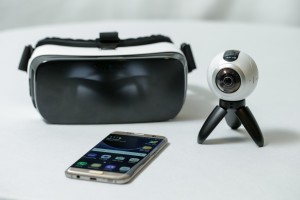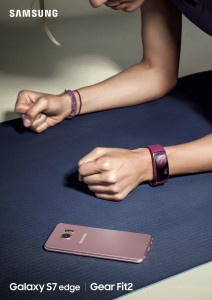Source: Samsung Blog
As the post-mobile era takes shape, we are beginning to see smart calling and imaging devices increasingly interconnected and even remotely controlled. The list of connected devices continues to grow – including everything from smartphones, wearable devices and information-focused consumer electronics, to electronics that are embracing the Internet of Things like smart home appliances and security monitoring systems.
Standing out among new entries are the large number of wearables – thanks to their rapid market acceptance. As component technologies involving display, user interface, UX and battery have rapidly evolved, the portability and convenience of wearable devices has correspondingly increased. The number and sophistication of wearables also continues to grow, thanks in large part to the development of more sophisticated networking infrastructure and portable electronic technologies.
Understanding wearables
Let’s take a quick look at what wearables really are. They’re miniature electronic devices that people can wear in order to engage in computing activities while on-the-go. Wearables have evolved into multi-functional communications tools that use advanced sensing technologies such as voice recognition, gesture recognition and biometrics.
Today, wearables can be divided into three categories: those that are portable, attachable, and eatable – yes, eatable. Some are already commercialized or under development include head-mounted displays (HMDs), smart bands, jackets and pills for use in a variety of key markets like education, entertainment, medical treatment and health care. For now, the most exciting of these appears to be the attachable segment.
Head-mounted VR
HMDs are already receiving quite a bit of attention in the form of virtual reality (VR) devices. Offering ultra-high resolution, these displays are taking center stage as market penetration for wearables accelerates.
Last May, Samsung Display unveiled the prototype of a 5.5-inch AMOLED panel with UHD resolution for VR devices at Display Week 2016, the global display exhibition held in San Francisco. It was a hit with the thousands of attendees. Featuring a resolution of 806 ppi (pixels per inch) — 2.3 times higher than currently commercialized VR displays, the Samsung AMOLED display is simply dazzling. Its UHD resolution conveys sharper, more vivid images than any prior commercial VR application. This is expected to invigorate the VR market as the richness of our latest display technology clearly enhances the immersive nature of the VR experience.
 |
|
Samsung's head mounted VR, camera and smartphone. (All photos courtesy of Samsung) |
Smart band workhorses
However, the up-and-coming workhorse of the wearables sector is smart band devices linked to health care facilities. These wearable devices lead the market with over 50% market share. Samsung Gear Fit 2, released last month in the U.S., received a great deal of attention due to a newly-added GPS functionality which allows consumers to measure exercise distance, speed, calorie consumption, etc., without a smartphone. The Gear Fit 2 also stores music independent of a smartphone, making it ideal for exercising in addition to health-related functions.
With the Gear Fit 2, Samsung Display’s 1.5-inch curved super AMOLED display emits bright light while conveying a richness of color imagery. The wearable device display is smaller than its predecessor (1.5-inch vs. 1.8 inch), but has a greater number of pixels per inch (245 vs. 311 ppi), allowing for more vivid images in wearables.
Also, the 1.5-inch super AMOLED display is 50% brighter than its predecessor, so its owner can easily check various information display read-outs even during outdoor activities under bright ambient light.
 |
|
Samsung's smartphone Galaxy S7 edge and wearable device Gear Fit2. |
The Future
According to research firm International Data Corporation (IDC), global shipments of wearables reached 78.8 million last year; that milestone is projected to soar to 213.6 million by 2020 – almost three times the amount shipped in 2015.
IDC also forecast that the wearables display market will boast a 20% compound annual growth rate by 2020. In terms of market share by product, smart watches hold a 52% share, while smart bands with their 28.5% share are destined to be the new growth driver in the wearables market for the foreseeable future.
Related post(s):
1. Playing a Critical Role in Growing the Market for Wearables
2. AMOLED Applications: Fashion, Cars, Buildings and More!
3. Curved Displays Continue to Rise in Popularity
4. Public Information Displays Surging in Popularity
5. Samsung OLED Displays Bring Greater Reality





 CN
TW
EN
CN
TW
EN







